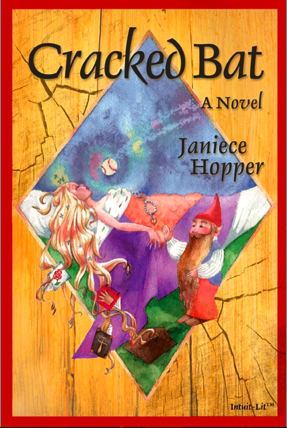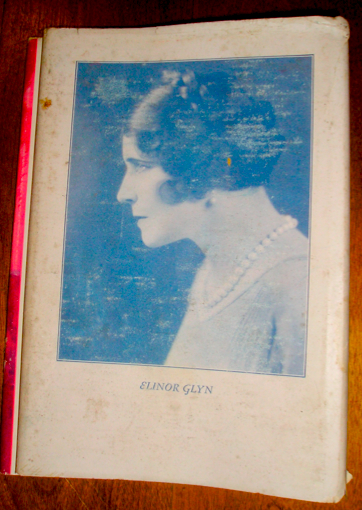Before I justify that rather Dickensian title, allow me to a little something to those of you reading this outside the confines of the United States, its territories, and wherever its military happen to be traipsing about these days: today is Memorial Day, the national holiday originally established to honor the dead of our Civil War, but expanded in an effort to conserve holiday time after World War I to include perished servicepeople of all of our wars and police actions.
In a similar conservation push, the birthdays of Presidents Washington and Lincoln were collapsed into a single day in February. And nowhere is the birthday of the late Millard Fillmore celebrated at all, except perhaps in his hometown.
So why, you may be wondering — and who could blame you? — have I seen fit to commemorate the day with a close-up shot of Montana ledge stone?
Because, it may shock you to learn, people who don’t happen to be addicted to writing frequently use three-day weekends for home improvement projects. And mattress sales, apparently.
Anyway, it’s pretty, isn’t it? What more do you people want from me?
Last time, I introduced you to the Short Road Home’s glamorous first cousin, Hollywood Narration, the all-too-common phenomenon of one character’s telling another things they already both know, purely for the sake of filling in the reader. Hollywood Narration is when information is conveyed by dialogue between persons who both already know the information perfectly well — and thus have absolutely no legitimate reason to be having this conversation at all.
As in this little gem of human interaction:
“So, Tim, how was your work at the steel mill today?” Sally asked, drying her rough hands on the fraying dishtowel that served her as a makeshift apron. “Having worked there for fifteen years — one before we married, two more before the twins were born, and five years since our youngest girl, Sammy, fell off the handlebars of Tim Junior’s bike and sustained brain damage, forcing me to quit my beloved teaching job and stay home to help her re-learn basic life skills — I imagine you sometimes get sick of the daily grind. But you are my husband, my former high school sweetheart, so I try to be supportive of all you do, just like that time I went down to the police station in the middle of the night in my pink flannel nightgown to bail you and your lifetime best friend, Owen Filch, out after you two drank too much near-beer and stole us the biggest Sequoia in the local national park — renowned for its geysers — for our Christmas tree.”
Tim shook his graying head ruefully. “Ah, I remember; I had gotten you that nightgown for Valentine’s Day the year that little Betty, then aged six, played Anne Frank in the school play. As you know, Sally, I am committed to working hard to support you and the kids. But since our eldest daughter, the lovely and talented Selma, won that baton-twirling scholarship to State, I have felt that something was lacking in my life.”
“Why don’t you go downstairs to the workshop you built in the basement with the money from that car-crash settlement? You know how much you enjoy handcrafting animals of the African veldt in balsa wood.”
“What would I do without you, honey?” Tim put his arms around her ample form. “I’ve loved you since the moment I first saw you, clutching a test tube over a Bunsen burner in Mr. Jones’ chemistry class in the tenth grade. That was when the high school was housed in the old building, you recall, before they had to move us all out for retrofitting.”
“Oh, Tim, I’d had a crush on you for six months by then, even though I was going out with my next-door-neighbor, Biff Grimley, at the time! Isn’t it funny how he so suddenly moved back to town, after all those years working as an archeologist in the Sudan?” Tim did not respond; he was kissing her reddish neck. “But you always were an unobservant boy, as your mother Gladys, all sixty-four years of her, always points out when she drops by for her weekly cup of Sanka and leftover cookies from my Tuesday night Episcopalian Women’s Empowerment Group social.”
Okay, so this is a pretty extreme example — but honestly, anyone who has read manuscripts professionally for more than a few weeks has seen Hollywood Narration almost this bald. Make no mistake: this is telling, not showing in its baldest form.
The term Hollywood Narration is mine, of course; due to its widespread unpopularity, it is cursed under many names throughout the publishing world. My personal favorite is the SF/fantasy moniker, as you know, Bob… dialogue. Whatever you like to call it, as far as I’m concerned, it’s one of the scourges of both the modern publishing industry AND the screenwriters’ guild.
For today, I had planned to leave my brief warning to this: when you are scanning your submission for this type of dialogue — and you most assuredly should; I’m not the only professional reader it drives completely nuts — try VERY hard, please, not to imagine those fine actors you’ve mentally cast in the movie version of your book (c’mon, every writer does that) reading these lines.
Why? Well, due to the unfortunate ubiquity of Hollywood Narration in movies, it might just sound logical to you.
I meant to leave it at that; truly, I did. But on Saturday night, I was dragged kicking and screaming to a midnight showing of a Korean horror film, Epitaph, in which a good 10 out of the first 20 minutes of the film consisted of characters telling one another things they already knew. Most of the other ten consisted of silent shots of sheets blowing symbolically in the wind — in a GHOST STORY; get it? — and characters standing frozen in front of doors and windows that they SHOULD NOT OPEN UNDER ANY CIRCUMSTANCES.
I pass along this hard-earned nugget of wisdom to those of you who may not have a chance to catch the flick: should you ever find yourself in a haunted hospital in Korea, don’t touch anything with a latch and/or a doorknob. Especially if you happen to be standing in front of the body storage wall in the morgue.
Trust me on this one.
Now, I would be the first to admit that horror is not really my mug of java — I spent fully a quarter of the film with my eyes closed and ears blocked, which I suppose is actually a rather high recommendation for those fond of the genre — so I did not see every syllable of the subtitles. But the fact is, my companions and I were not the only ones giggling audibly during the extensive backstory-by-dialogue marathons. An actual sample, as nearly as I can remember it:
Grown daughter: Dad, are you lonesome?
Doctor-who-interned-in-haunted-hospital: (chuckling ruefully) No, of course not.
Grown daughter: You’re too hard on yourself, Dad. Stepmother had a heart condition long before you married her.
Doctor-who-interned-in-haunted-hospital: But we were married for less than a year!
Grown daughter: You can’t blame yourself. Mother died in having me, and Stepmother had been sick for a long time. It’s not your fault. It’s nothing you did.
Doctor-who-interned-in-haunted-hospital: (weighed down by Ominous Guilt) Both marriages lasted less than a year.
I’m sure that you can see the narrative problem — can you imagine a more blatant telling, rather than showing, presentation? — but the laughter from the audience was a dead giveaway that this dialogue wasn’t realistic. Bad laughter is a sure sign that the audience has been pulled out of the story.
Too addled with a surfeit of Hollywood narration to sleep — and, frankly, not overly eager to dream about a maniacally-laughing, high C-singing dead mother standing by her small, terrified daughter’s hospital bed in a ward where there were NO OTHER PATIENTS — I ran home, buried myself under the covers, and reached for the nearest book to sooth my mind and distract my thoughts from the maniacally-laughing, high C-singing dead woman who was clearly lurking nearby.
As luck would have it, the volume in question was a set of Louisa May Alcott’s thrillers; I had used it as an example on this very blog not so long ago. Yet no sooner had I opened it when my eye fell upon this sterling opening to a story promisingly entitled, THE MYSTERIOUS KEY AND WHAT IT OPENED. Because I love you people, I have excised the scant narration and turgid poetry of the original, so you may see the dialogue shine forth in untrammeled splendor:
“This is the third time I’ve found you poring over that old rhyme. What is the charm, Richard? Not its poetry, I fancy.”
“My love, that book is a history of our family for centuries, and that old prophecy has never yet been fulfilled…I am the last Trevlyn, and as the time draws near when my child shall be born, I naturally think of the future, and hope he will enjoy his heritage in peace.”
“God grant it!” softly echoed Lady Trevlyn, adding, with a look askance at the old book, “I read that history once, and fancied it must be a romance, such dreadful things are recorded in it. Is it all true, Richard?”
“Yes, dead. I wish it was not. Ours has been a wild, unhappy race till the last generation or two. The stormy nature came in with the old Sir Ralph, the fierce Norman knight, who killed his only sun in a fit of wrath, by a glow with his steel gauntlet, because the boy’s strong will would not yield to his.”
“Yes, I remember, and his daughter Clotilde held the castle during a siege, and married her cousin, Count Hugo. ‘Tis a warlike race, and I like it in spite of the mad deeds.”
“Married her cousin! That has been the bane of our family in times past. Being too proud to mate elsewhere, we have kept to ourselves till idiots and lunatics began to appear. My father was the first who broke the law among us, and I followed his example: choosing the freshest, sturdiest flower I could find to transplant into our exhausted soil.
“I hope it will do you honor by blossoming bravely. I never forget that you took me from a very humble home, and have made me the happiest wife in England.”
“And I never forget that you, a girl of eighteen, consented to leave your hills and come to cheer the long-deserted house of an old man like me,” her husband returned fondly.
“Nay, don’t call yourself old, Richard; you are only forty-five, the boldest, handsomest man in Warwickshire. But lately you look worried; what is it? Tell me, and let me advise or comfort you.
“It is nothing, Alice, except my natural anxiety for you…”
By this point in the text, tangling with the maniacally-laughing, high C-singing dead harpy was beginning to look significantly better to me. Clearly, the universe was nudging me to set forth again like the Ghosts of Christmas Past, Present, and Future to warn writers to alter their sinful ways before it was too late.
Just in case anyone out there didn’t spot the logic problem here: generally speaking, in real life, people do not recite their basic background information to kith and kin that they see on a daily basis. Unless someone is having serious memory problems, it is culturally accepted that when a person repeats his own anecdotes, people around him will stop him before he finishes.
Because, among other things, it’s BORING.
Yet time and again in print, writers depict characters wandering around, spouting their own résumés without any social repercussions. Not to mention listing one another’s physical and mental attributes, informing each other of their respective ages and marital histories, listing the articles of furniture in the room, placing themselves on a map of the world, and all of the other delights we saw above.
As we may see from Aunt Louisa’s example, authors have been using characters as mouthpieces for background for an awfully long time. Dickens was one of the all-time worst violators of the show, don’t tell rule, after all. Since the rise of television and movies — and going back even farther, radio plays — certain types of Hollywood Narration have abounded still more in manuscripts.
See dialogue above, lifted from the Korean horror movie. Or any of the films of Stephen Spielberg.
Oh, don’t get me started — but since you have, let me suggest something radical: readers tend to be pretty smart people. They are often, bless their respective hearts, quite capable of looking at an opening like this and remarking, “Hey, wait a minute: real people would have no reason to say these things to each other. Isn’t it just possible that the author is placing this dialogue into their mouths merely so I will know what’s going on?”
And you know something? They would be right. But that’s not all that’s going on here.
Like so many transgressions of the show, don’t tell rule, Hollywood Narration does provide some definite benefits to the writer who incorporates it. placing backstory and description in dialogue instead of narrative text is a shorthand technique, a means of allowing the author to skip showing entire scenes — or, even more commonly, to avoid figuring out how to reveal necessary information in a slower, more natural manner.
It is, in short, a trick — which is precisely how a professional reader who has seen it used 500 times this month tends to regard it. Millicent might not see it as necessarily the result of narrative laziness (although it can be that, too), but at least as evidence of a writer’s not being conversant with the many ways a text can convey information to a reader without just coming out and telling him outright.
Next time, I’m going to talk a bit more about this form of sleight-of hand and why so many aspiring writers seem to be so very fond of it. In the meantime, if you find yourself standing in front of a wall of drawers in a Korean morgue, keep your hands to yourself, okay? Maniacally-laughing, high C-singing spirits tend to be a trifle hard to shake once wakened.
Keep up the good work!













